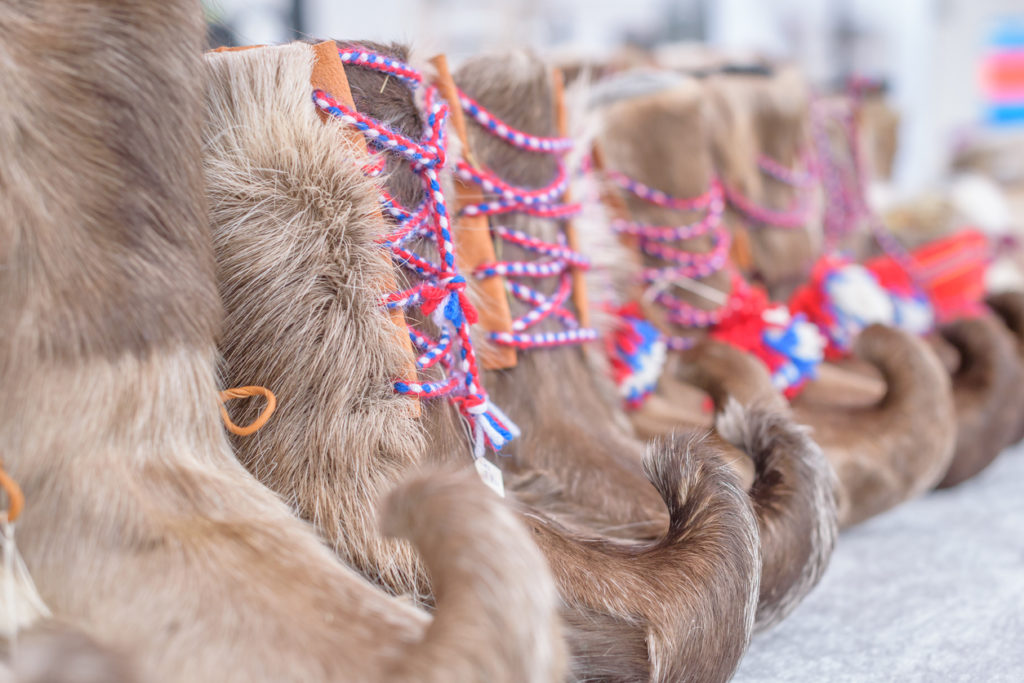What Role Does Reindeer Herding Play in Sami Culture?
Deep in the heart of Finnish Lapland, the Sami people have thrived for centuries, maintaining a unique and vibrant culture. One of the most significant aspects of Sami life is reindeer herding, a practice that is deeply intertwined with their history, economy, and traditions. In this blog post, we will explore the multifaceted role of reindeer herding in Sami culture, shedding light on its historical origins, economic and ecological significance, traditional practices, modern challenges, and its impact on Sami food and crafts.
Historical Origins of Reindeer Herding in Sami Culture
Reindeer herding has been a cornerstone of Sami culture for thousands of years. The practice is believed to have originated around 2,000 years ago, evolving from hunting wild reindeer to domesticated herding. This transition allowed the Sami to develop a sustainable way of life, adapting to the harsh Arctic environment. The reindeer provided not only a source of food but also materials for clothing, tools, and shelter, making them indispensable to the Sami way of life.
Historically, reindeer herding was a nomadic practice, with Sami families moving with their herds across vast landscapes in search of grazing grounds. This nomadic lifestyle fostered a deep connection with nature and a profound understanding of the land, which is still evident in Sami culture today. The herding routes and seasonal migrations were carefully planned, ensuring the sustainability of the reindeer population and the environment.
Economic and Ecological Significance of Reindeer Herding
Reindeer herding remains a vital economic activity for the Sami people. It provides a primary source of income through the sale of reindeer meat, hides, and antlers. These products are highly valued, not only within the Sami community but also in broader markets. The economic benefits of reindeer herding extend beyond direct sales, as it also supports related industries such as tourism and traditional crafts.
Ecologically, reindeer herding plays a crucial role in maintaining the balance of the Arctic ecosystem. Reindeer grazing helps to manage vegetation, preventing overgrowth and promoting biodiversity. The Sami herders’ deep knowledge of the land and sustainable practices ensure that the reindeer herds do not deplete the natural resources, preserving the environment for future generations.
The Role of Reindeer Herding in Sami Traditions and Ceremonies
Reindeer herding is not just an economic activity; it is deeply embedded in Sami traditions and ceremonies. The annual cycle of herding activities, such as calving, marking, and migration, is accompanied by various rituals and celebrations. These events are opportunities for the community to come together, share knowledge, and strengthen social bonds.
Traditional Sami ceremonies often involve the use of reindeer products. For example, the joik, a traditional form of Sami singing, is sometimes performed to honour the reindeer and the herding lifestyle. Reindeer antlers and hides are used in crafting ceremonial items, such as drums and clothing, which hold significant cultural and spiritual value.
Modern Challenges and Adaptations in Reindeer Herding
Despite its deep roots, reindeer herding faces numerous modern challenges. Climate change, land encroachment, and industrial development threaten the traditional herding grounds and migration routes. These changes have forced the Sami to adapt their practices, finding new ways to sustain their herds and culture.
Technological advancements have also influenced reindeer herding. GPS tracking and modern transportation methods have made it easier to monitor and manage herds. However, these innovations must be balanced with traditional knowledge to ensure the sustainability of the practice. The Sami community continues to advocate for their rights and the protection of their lands, striving to preserve their way of life in the face of these challenges.
Reindeer Herding and Its Impact on Sami Food and Crafts
Reindeer herding has a profound impact on Sami cuisine and crafts. Reindeer meat is a staple in Sami diets, prepared in various traditional dishes such as suovas (smoked reindeer meat) and poronkäristys (sautéed reindeer). These dishes are not only delicious but also a testament to the Sami’s resourcefulness and connection to their environment.
In addition to food, reindeer herding influences Sami crafts, known as duodji. Reindeer hides, antlers, and bones are used to create a wide range of items, from clothing and footwear to tools and decorative objects. These crafts are not only functional but also carry cultural significance, reflecting the Sami’s artistic heritage and their relationship with nature.
At VALO Finland, we aim to provide our guests with an immersive experience of Sami culture, including the rich traditions of reindeer herding. Our luxury villas in Saariselkä offer the perfect base for exploring the wonders of Lapland, with expert guides available to help you discover the unique heritage of the Sami people. Whether you’re interested in learning about traditional practices, tasting authentic Sami cuisine, or experiencing the beauty of the Arctic landscape, we are here to make your stay unforgettable.
In conclusion, reindeer herding is an integral part of Sami culture, shaping their history, economy, traditions, and way of life. By understanding and respecting this practice, we can gain a deeper appreciation for the Sami people and their enduring connection to the land. At VALO Finland, we are committed to sharing this knowledge with our guests, offering a unique and enriching experience in the heart of Finnish Lapland.
